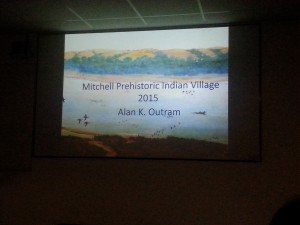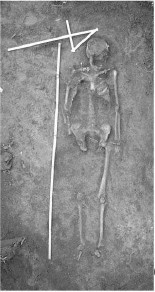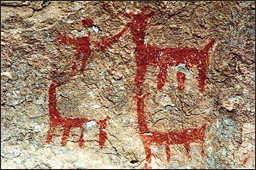
The Rock Art Site of Calacala, Bolivia. Credit: http://www.bradshawfoundation.com/bolivia/calacala.php
This week’s research seminar was presented by Dr. Penny Dransart on the development and continuation of the pastoral care of camelids in the Chilean Andes over the last several thousand years. The high altitudes and steppe regions of these mountains make them largely unsuitable for the cultivation of crops, so nomadic herding is the main subsistence that can be sustained here. Penny’s work explores the long-term continuity of herding practices and the use of pastures to keep camelid herds through exploration of the ethnographic and archaeological records, as well as a broad brush approach to understanding camelids.

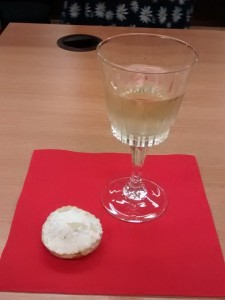
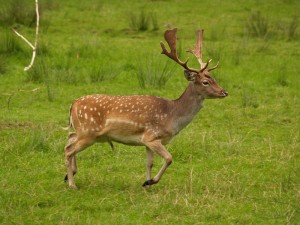

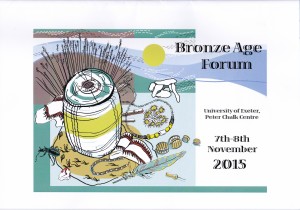
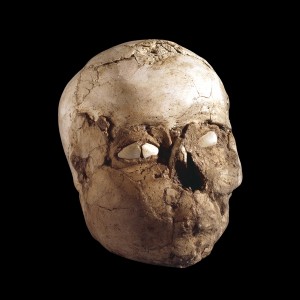
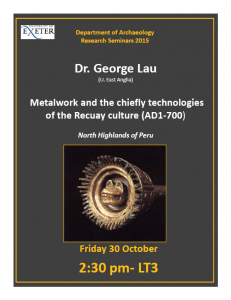 Our visiting speaker last Friday was Dr. George Lau of the University of East Anglia. He delivered an artefact rich presentation entitled “Metalwork and the Chiefly Technologies of the Recuay Culture (AD1-700), North Highlands of Peru”.
Our visiting speaker last Friday was Dr. George Lau of the University of East Anglia. He delivered an artefact rich presentation entitled “Metalwork and the Chiefly Technologies of the Recuay Culture (AD1-700), North Highlands of Peru”.